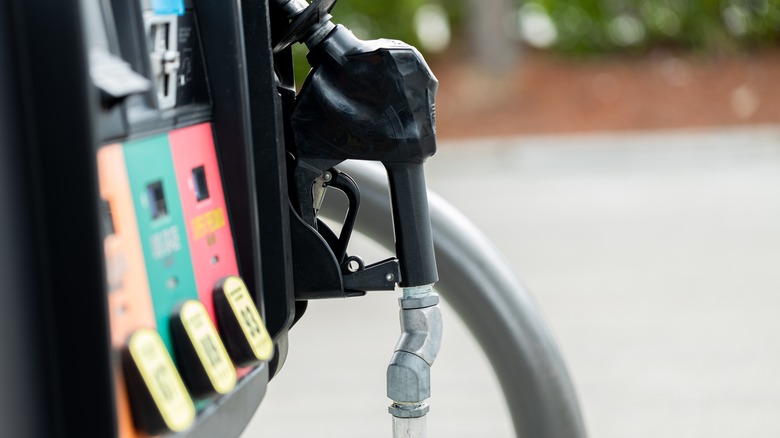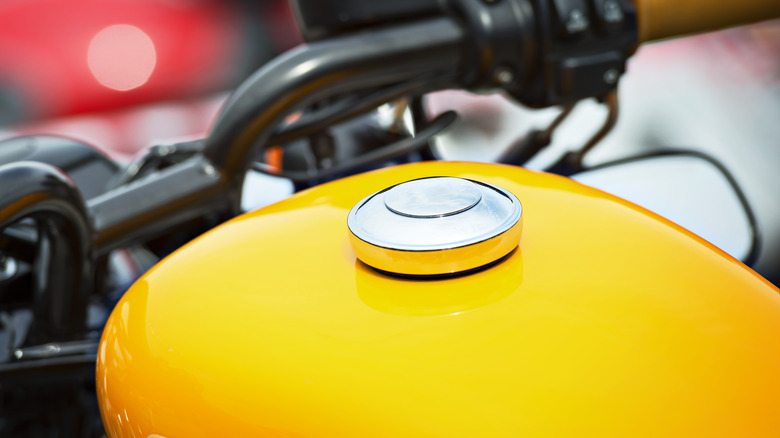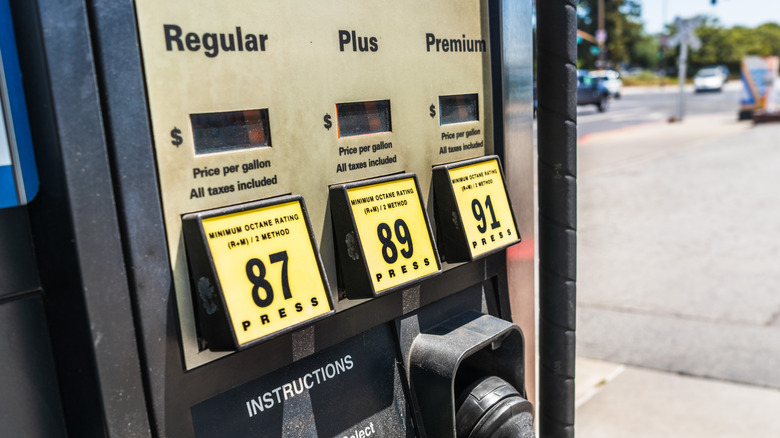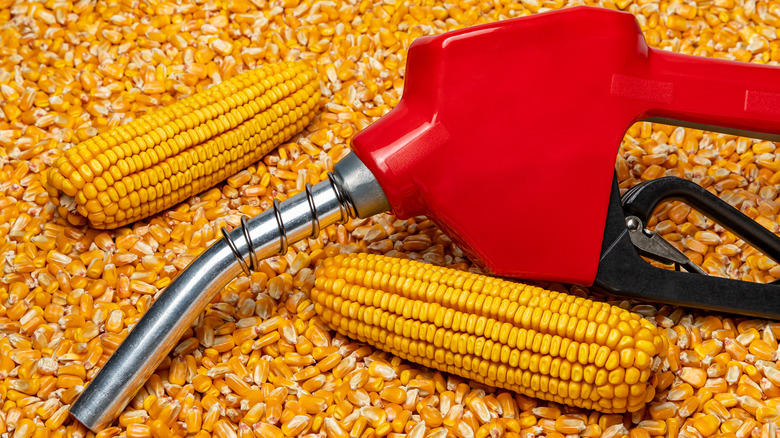
Jeff McCollough/Shutterstock
As much fun as it is to hop onto a motorcycle and crank it up, it’s not as simple as pressing a button and hitting the road, at least not until electric motorcycles get less expensive. Like any engine-powered vehicle, your motorcycle needs fuel, necessitating regular trips to the local gas station. Before you press the button, pull the pump, and leave it to do its business, you might want to spare a thought to the kind of fuel you’re putting in there.
While there aren’t any objectively bad fuel types at your local gas station, the different fuel types on offer will result in different levels of performance, and putting the wrong fuel into your motorcycle can wreak havoc on your engine. The exact kind of fuel you should use depends heavily on the kind of bike you’re riding, the kind of riding you’re doing, and, of course, your personal budget. Before your next gas-up, take some time to learn about what your ride’s ideal fuel is, and the differences between the major fuel types.
Finding basic information

Egon69/Getty Images
Before we even get to the subject of the fuels themselves, we first need to discern what kind of fuel your bike is thirsty for. The best way to get baseline information about your motorcycle’s fuel needs is to check your owner’s manual, or look for a sticker on the tank. You can usually find the ideal type of fuel for your motorcycle listed in the owner’s manual, though if you lost the manual or bought your bike pre-owned and didn’t get a manual, you can also contact the manufacturer directly for more information, or check on the web.
In addition to the manufacturer’s recommendation, you should also consider the motorcycle’s age — older models may have more stringent fuel requirements, possibly even requiring fuels that aren’t as common anymore (in which case they will require an additive), while more modern engines are designed with the latest fuel and emissions standards in mind.
Unleaded gasoline and octane ratings

Sundry Photography/Getty Images
The most common form of fuel for a motorcycle — or any vehicle with a combustion engine — is unleaded gasoline. Fun fact: It’s called that because most gasoline used to contain tetraethyl lead as an additive until rising standards for health and emissions forced its removal in the 1970s.
When you’re at the gas pump, have you noticed the large numbers printed on the fuel selection buttons? Those are the octane ratings, an abstraction of how good a fuel is at enduring the harsh conditions inside an engine. Fuel with a higher octane rating won’t ignite until it’s exposed to higher pressure and temperatures, which makes it good for high-performance engines. Most commercially available fuels have octane ratings ranging from 87 to 94, with regular fuel being on the lower end and premium fuel being at the top.
For most motorcycles, regular unleaded gasoline should be fine. If you’re riding a motorcycle with a high-compression engine, you’ll want fuel with a higher octane rating. Using regular fuel in a high-performance engine can negatively impact your overall performance, and even cause damage. You need to be especially considerate of octane ratings with sports bikes. If your bike has a two-stroke engine, most types of ethanol-free gas should be fine so long as you’re using the right two-stroke oil.
Ethanol and alternative fuels

J.J. Gouin/Shutterstock
There have been some attempts at alternative fuel types for motorcycles over the years, including diesel and methanol in heavy-duty and racing bikes, but one of the most prominent is ethanol. Back in the 1970s, in response to the rising cost of gasoline, ethanol fuel emerged as an attractive alternative. Since ethanol comes from readily available sources like corn, it’s considered a greener alternative to straight-up unleaded gasoline. There are even ongoing experiments to convert hydrogen and carbon dioxide pollution into ethanol for fuel.
Gas stations usually have an ethanol-gasoline blend on tap for around the same cost as regular or less. However, unless your motorcycle was specifically built from the ground up to properly accommodate ethanol fuel, you’re likely to get poor performance out of it. Unlike regular gasoline, ethanol can absorb ambient moisture from the air. Ethanol bound to water will eventually separate and settle at the bottom of the tank — drastically reducing the octane rating of your fuel.
Ethanol allegedly produces fewer emissions than gasoline, though this is still a hotly contested topic. That said, its presence can boost engine performance, which is why some premium fuels contain it in small amounts to increase the octane rating. The trade-off for a majority-ethanol blend is more frequent repairs and replacements on your bike. Unless you’re riding a motorcycle built to accept ethanol fuel exclusively, it’s probably better to just stick with unleaded.